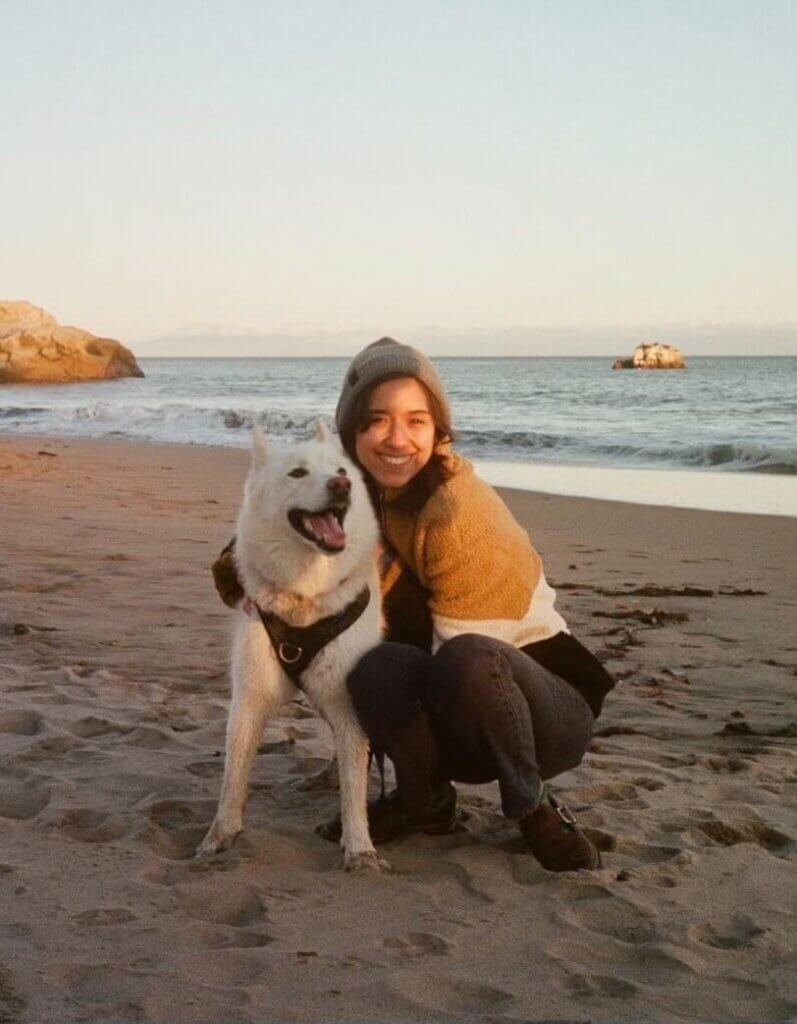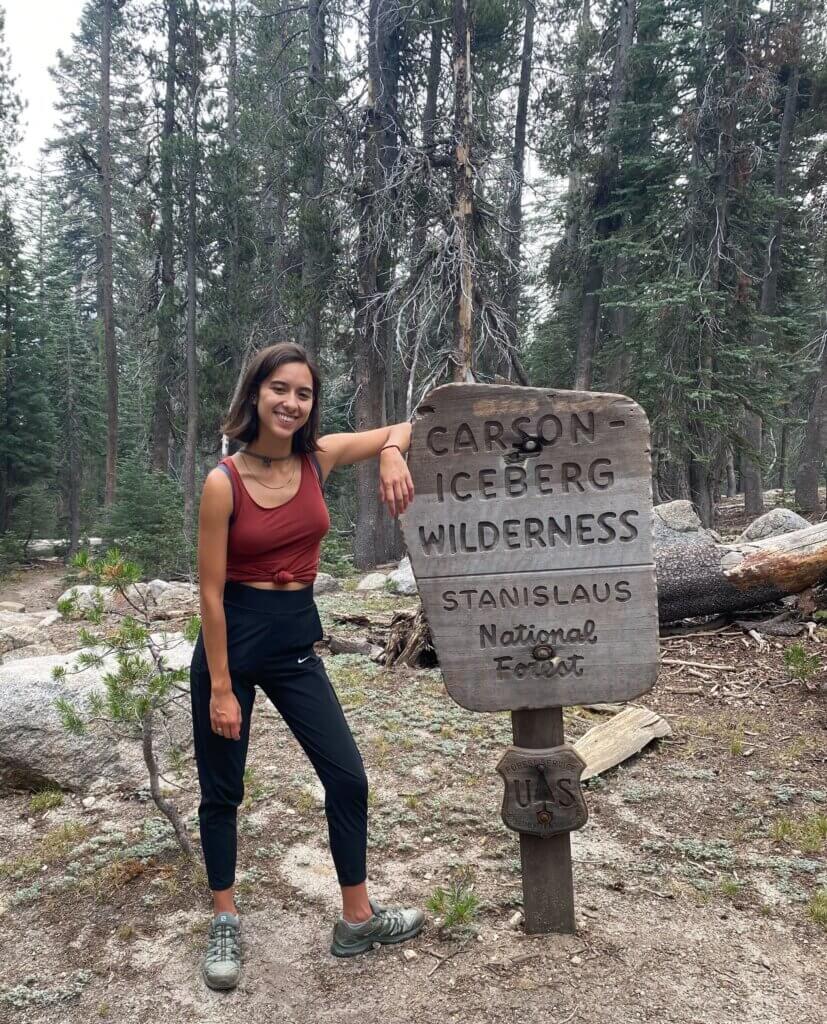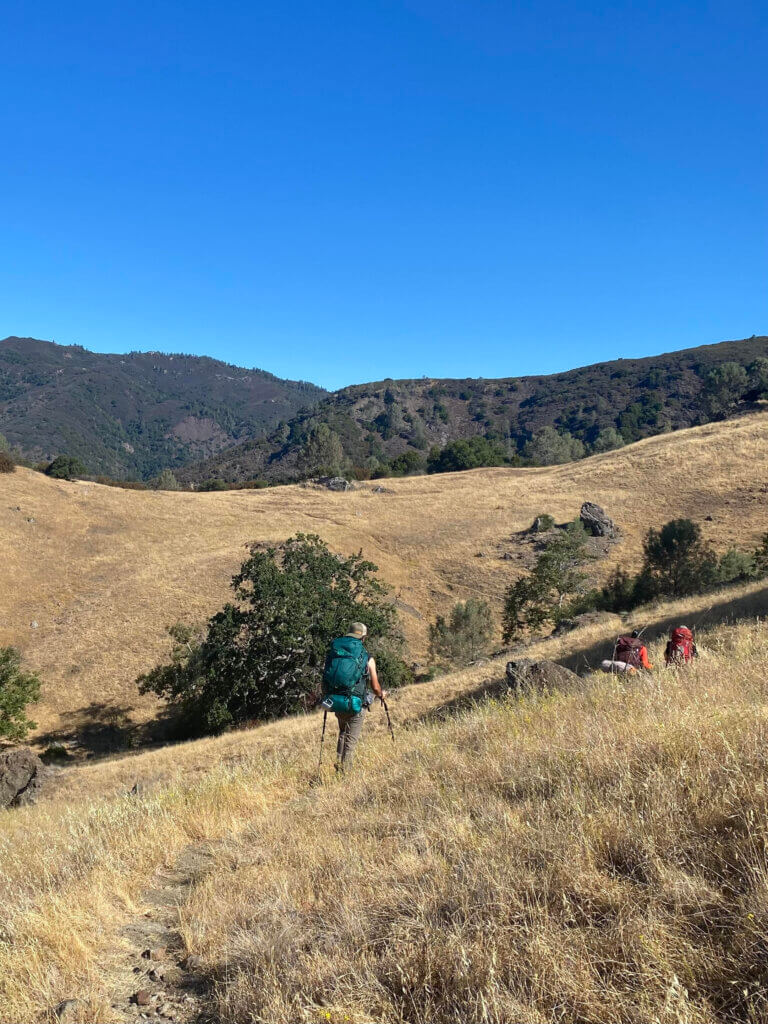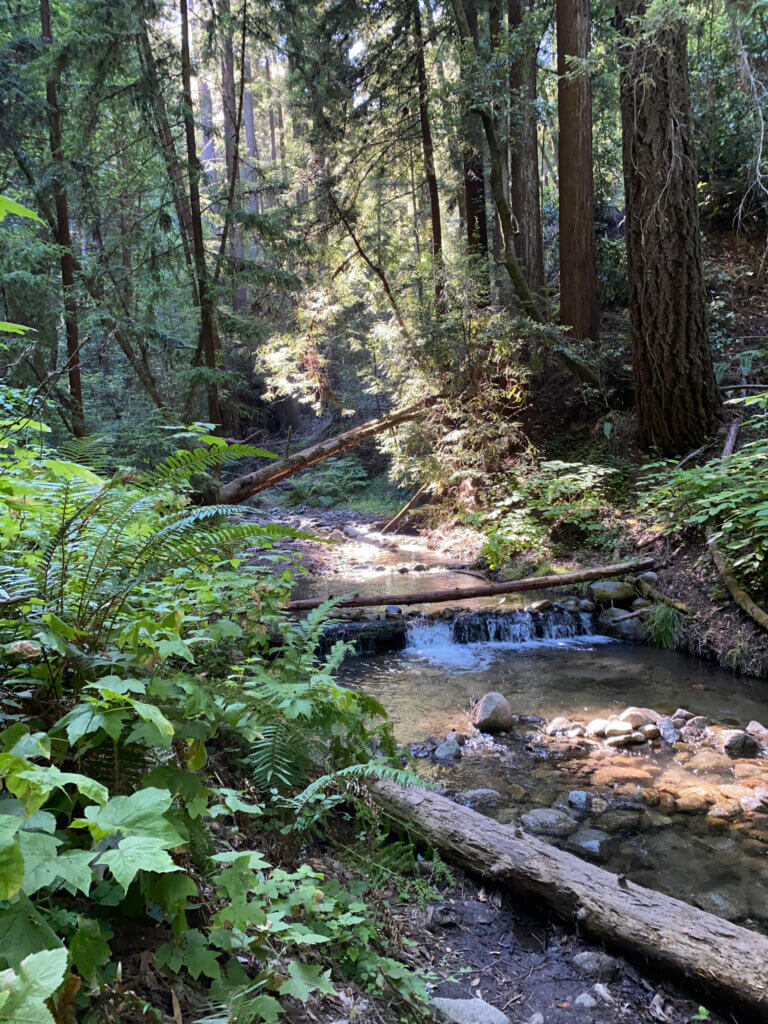Statement of Purpose: Ten Strands continues to introduce its staff through statements of purpose that reveal the motivations and ambitions of their work. Today, we hear from Ten Strands advancement associate, Sofia Safranek, who shares her childhood experiences at an outdoor education camp and her connection to the Santa Cruz area. She illustrates how these influences shaped both her personal and professional journey toward environmental literacy.


When I was thirteen, I helped out at an outdoor education day camp that my mother cofounded. Every day of the weeklong summer camp took place at a different local park in the Pajaro River watershed, each in a different ecosystem. My favorite day was at The Forest of Nisene Marks State Park in Aptos, California, a second-growth redwood forest in the Santa Cruz Mountains. All but one small grove of old-growth redwoods were clear-cut at the turn of the twentieth century, and in this grove was a picnic area where we spent a day. For one of the day’s activities, we turned pigment from plants and stones moistened by the creek into creative works of art. On the stroll down to the picnic area, we observed the flora and fauna of the redwood ecosystem. The students, ranging from age seven to ten, were brimming with excitement and wonder.
Nature is not a static entity but a place teeming with the commotion of our non-human neighbors. As Robin Wall Kimmerer puts it in Braiding Sweetgrass, “Recognition of the personhood of other beings asks that we relinquish our perceived role as masters of the universe and celebrate our essential role as an equal member in the democracy of all species . . . We are surrounded by teachers and mentors who come dressed in foliage, fur, and feathers. There is comfort in their presence and guidance in their lessons.”
The Santa Cruz area is a special place to me. It is where I earned my undergraduate degree, surrounded every day by the familiar smells of bay trees and redwood forest as I walked to class. I also frequent local beaches with my dog and sometimes take advantage of a low tide to search for marine life in the tide pools. The natural landscape is my life force—it brings me closer to community, it takes me on challenging journeys hiking and backpacking that test my strength and willpower, it is a source of creative inspiration, and it provides me a sense of presence and solace in a world with increasingly distracting forces.

At the same time, while living in Santa Cruz, I’ve witnessed the destructive power of nature. The CZU lightning fires of 2020 destroyed dozens of homes in the Santa Cruz Mountains and forced many more community members as well as personal friends to evacuate. In the winter of 2022-2023, Santa Cruz was relentlessly hit by a series of torrential storms known as atmospheric rivers. These storms caused massive power outages, floods that spanned entire neighborhoods, landslides, and tidal surges that tore apart coastal bluffs and destroyed two historical piers. Although I emerged from these storms unscathed, at one point I received an evacuation warning, and if the rain had persisted that day, I could have faced disaster. The risk of extreme weather events similar to what happened in my community is expected to increase with climate change.
Despite this, I know better than to fall into despair. Often, stepping outside to be near my non-human neighbors keeps me grounded. One of the most beloved species in the Central Coast is a perfect reminder of this. The California sea otter, arguably one of the cutest sea mammals, was presumed extinct over a century ago, hunted for its luxurious (and at the time trendy) pelts. Sea otters are so much more than a cute face—they are a pivotal part of a healthy kelp forest, keeping the bottom-feeder population from overwhelming the ecosystem. A small colony of fifty otters was found in the 1930s in a remote part of the Big Sur coast. Through collective conservation efforts, this population rebounded to over three thousand, and now it is hard to visit the coast of the Monterey Peninsula without spotting at least one. The road ahead is long, and this vulnerable species is still endangered. However, this story reminds me that the hope to turn things around is never lost.
This hope for a better world is what led me to a career supporting cause-driven nonprofits and eventually how I crossed paths with Ten Strands. I know firsthand the value of outdoor education and environmental literacy in the way that I have seen students’ eyes light up learning about forest ecosystems while in a forest and in the way that I feel palpably more connected to the environment the more I learn about it. I am so grateful to be part of a team of like-minded colleagues devoted to this worthy cause: strengthening the partnerships and strategies that will bring environmental literacy to all of California’s TK–12 students.



